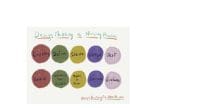It’s the most promising time of the year. A clean slate ahead and a chance for a fresh start. No doubt nurses are making New Year’s resolutions like everybody else. The basic arc of a typical year-end pledge is centered around alimentation (eat more vegetables and less meat) or elimination (lose weight or drink less). I sometimes wonder what it would be like to hear or read the declarations of nurses for the coming year. I bet it will be a cacophony of oaths to do better, reflections on missed opportunities, obstinate desires to excel, and pledges to get things right. In the context of the COVID-19 pandemic, a bedside nurse’s New Year’s resolution is a proxy blueprint to repair the wobbly U.S. healthcare system.
Beyond the truism that nurses are good at planning (nursing care plans, anyone?), I’d like to propose an approach to making evidence-based (don’t we just love this phrase?) resolutions for nurses. A basic template would be the SMART acronym for writing goals that we learned in fundamentals of nursing. High-quality resolve needs to be Specific, Measurable, Attainable (or have an Action), Realistic, and have a Time frame. Yes, they make sense, whether you’re naughty or nice. Smartly written resolutions have a ring of success about them—a certain formality that begs your attention.
I personally didn’t prepare New Year’s resolutions (make a list) until a couple of years ago. This doesn’t mean that I didn’t think about them. What I found amusing or enlightening was hearing other people’s resolutions. This taught me this lesson: One of the surest ways to unhappiness is to compare yourself to others. So I stopped asking. At year’s end, I do a little life review. Not the your-whole-life-flashing-in-front-of-you variety, but a quiet and contemplative conversation with myself, asking so-what’s-the-plan types of questions. This exercise can sometimes leave me exhausted while horizontal on the sofa. And I’m quick to pronounce a nursing diagnosis of “activity intolerance” for the last days of the year. But, I digress. The point is, imagining or creating resolutions should be energizing as we reboot and reset for the new year.
In my first year as a nurse in the United States, I listed the areas of improvement I wanted for myself in relation to my performance at the bedside. The impetus for this was that I was told, during my orientation, that I wasn’t meeting expectations (the nurse educator didn’t say which ones). I was teetering on getting terminated or fired, after only 4 weeks on the job. Written on a ruled yellow pad, I affixed a list on the fridge door. Each time I was in the kitchen, the list unassumingly dangled to remind me which aspects of my practice needed attention.
Periodically, I’d pick up the list to draw a line across the ones I had already met and add new ones. Looking back, I realize that I was making New Year’s resolutions, asynchronous to the passing of the year. On a weekly basis, I was refining my skills by resolving to improve each time I encountered a deficiency in my bedside skills. I regret now that I didn’t keep that list. It would be revelatory to see what has changed and what has stayed the same in my practice. Since I’m no longer a bedside nurse, I would like to imagine my top ten resolutions if I were a staff nurse at a hospital in 2021. Here they are (in random order):
- Arrive 30 minutes early for work.
- Perform socially distant hourly rounding.
- Smile under the N95 mask when greeting patients, visitors, and colleagues.
- No matter what the rush, don’t forget to flush those saline locks and lines.
- Turn patients every 2 hours and not just document the task.
- Declutter the bedside before leaving the patient’s room.
- Be nice to the nurse educators when they come around to give an in-service.
- Know where the fire extinguisher is even if The Joint Commission isn’t around.
- Listen to the patient’s lung sounds before documenting “clear to auscultation.”
- Always do hand hygiene before, in-between, and after patient care.
SMART aren’t they? Will I be able to keep them? Let’s save that question for the next life review. Resolutions aren’t prophecies. Their essence lies in the promise to do good work, even if at times we fail. The celebrated English sculptor Henry Moore admonished us to think in terms of the day’s resolutions, not the years’. Nurses’ need not wait for the end of the year to examine their resolve. The handoff during change-of-shift is our twice daily opportunity to make these covenants lived realities for our patients and ourselves.
The Year of the Nurse came down particularly hard on frontline nurses, putting their willpower to the test. The psychologist David DeSteno tells us that willpower alone isn’t enough to make us successful. In his research, he discovered that pride, gratitude, and compassion make people value the future, a worthy consideration in the age of uncertainty. These virtues not only significantly enhance our perseverance when performing difficult tasks, they also hold the power to heal our future selves and give us patience to anticipate the good. So, to all my comrades-in-masks, we shall, against all odds, remain grateful for being recognized as “essential,” take pride in the lives we helped save, and imagine ourselves in the shoes of others, especially when the owners of those shoes can no longer stand on their own. This exercise will lead us closer to fulfilling our New Year’s resolutions.
Reference
DeSteno D. Emotional Success: The Power of Gratitude, Compassion, and Pride. Boston, MA: Houghton Mifflin Harcourt; 2019.


















